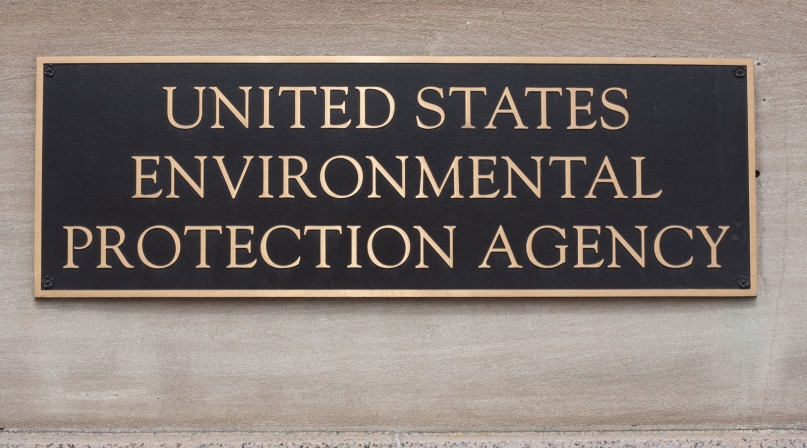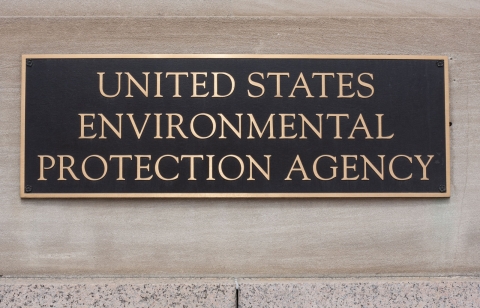Trump Administration officially releases new proposed “Waters of the United States” definition
Upcoming Events
Related News

Key Takeaways
On February 14, the U.S. Environmental and Protection Agency (EPA) and the U.S. Army Corps of Engineers (Army Corps) officially released the Trump Administration’s proposed new “Waters of United States” (WOTUS) rule defining which bodies of water across the United States are subject to federal regulations under the Clean Water Act (CWA). This action represents the second step in the process taken by the EPA and Army Corp to review and replace the Obama Administration’s 2015 WOTUS rule. According to the agencies, the proposed definition is intended to increase CWA program predictability and consistency by creating a definition that is more easily implementable. The proposed rule is open for public comment until April 15, 2019, and comments can be submitted at https://www.regulations.gov/, using Docket ID No. EPA–HQ–OW–2018–0149.
The new proposed definition would create six categories of regulated waters and includes 11 exemptions. The six categories of WOTUS include: traditional navigable waters; tributaries; certain ditches; certain lakes and ponds; impoundments; and adjacent wetlands. The proposed rule specifies that if water does not meet one of the six listed categories, it will not be considered a WOTUS and clarifies that certain other waters will also no longer be considered a WOTUS, such as ditches, features that are only wet during rainfall events, groundwater, stormwater control features, wastewater recycling infrastructure built in uplands, converted cropland and waste treatment systems. NACo is currently in the process of developing a comprehensive analysis of the new proposed definition.
In addition to public comments, EPA and the Army Corps held an informational webcast when the proposed rule was published in the federal register, which can be viewed here. The agencies are also hosting a listening session on the proposed rule in Wyandotte County/Kansas City, Kansas on February 27-28. Click here for more information.
On February 4, NACo also hosted a webinar with the State and Local Legal Center on the pre-published proposed WOTUS definition released in December 2018. Click here to view the webinar.
- To read the proposed rule and agency fact sheets, click here.
BACKGROUND INFORMATION
WOTUS is a term used in the Clean Water Act to determine what waters and their conveyances fall under federal and state permitting authority. In 2014, EPA and the Army Corps undertook an effort to rewrite and expand the current WOTUS definition. In 2015, the Obama Administration finalized a new definition of WOTUS, which was immediately challenged in the courts.
In February 2017, President Trump released Executive Order (EO) 13778: Restoring the Rule of Law, Federalism, and Economic Growth by Reviewing the “Waters of the U.S.” Rule, which instructed the EPA and the Corps to review and rewrite the 2015 WOTUS rule. Then, in January 2018, EPA and the Army Corps finalized a rule to delay the 2015 WOTUS rule implementation date until 2020, giving the EPA time to develop the proposed definition released today.
The 2015 WOTUS rule is currently in effect in 22 states (California, Connecticut, Delaware, Hawaii, Illinois, Maine, Maryland, Massachusetts, Michigan, Minnesota, New Hampshire, New Jersey, New York, Ohio, Oklahoma, Oregon, Pennsylvania, Rhode Island, Tennessee, Vermont, Virginia and Washington), while regulations from the 1980s are in effect in the other 28 states.

Attachments
Related News
‘Fix-It Fair’ brings new life to damaged items, helps divert waste
Thurston County, Wash. partnered with a non-profit, whose members volunteer to fix things that were difficult to recycle.

U.S. House of Representatives passes SPEED Act and other permitting reform bills
On December 18, the U.S. House of Representatives passed the SPEED Act (H.R. 4776). The SPEED Act would strengthen county involvement in decision-making and make needed commonsense reforms to the federal environmental review process.

House Natural Resources Committee advances the Endangered Species Act Amendments Act of 2025
On December 17, the House Natural Resources Committee advanced the Endangered Species Act (ESA) Amendments Act of 2025 (H.R. 1897). The version passed by the committee adopted several changes from the initial bill and would address key county concerns by improving the implementation of the ESA. The legislation now awaits a floor vote before the whole U.S. House of Representatives.